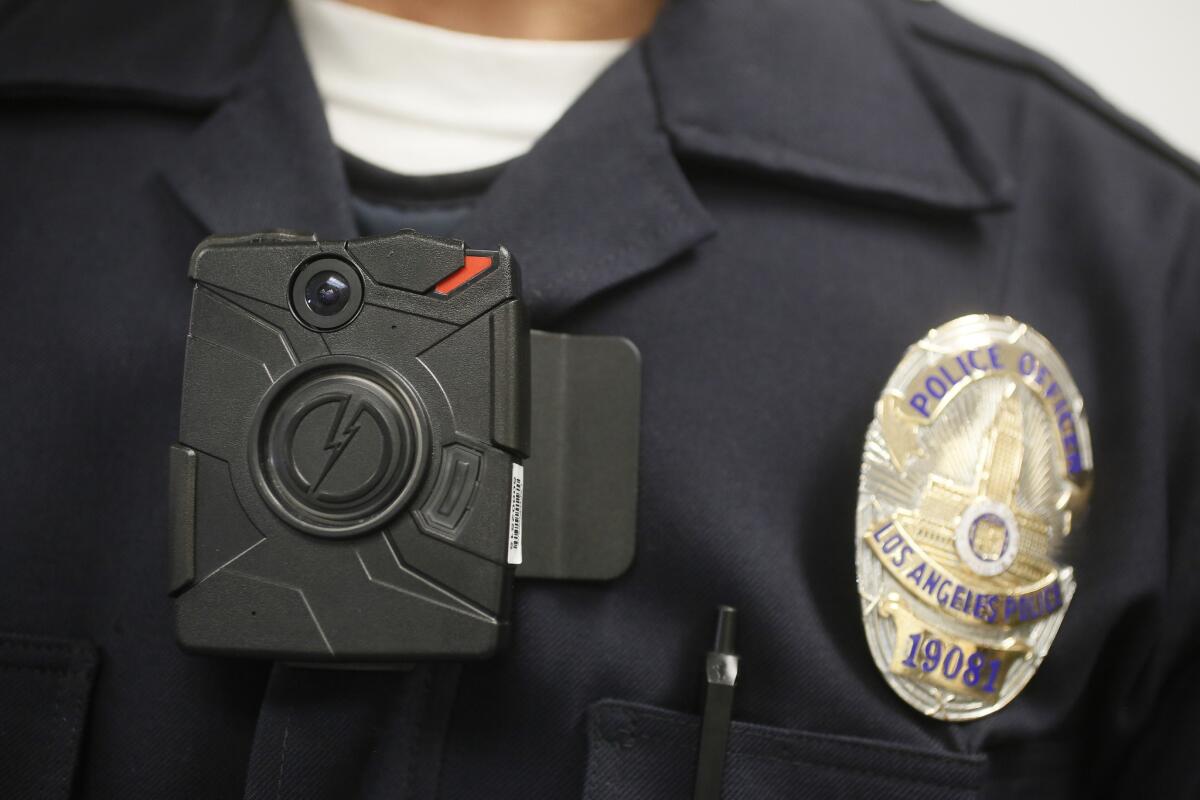Editorial: What does the Border Patrol have against body cameras?

An LAPD officer wears an on-body camera during a demonstration in January of 2014.
- Share via
To assure the public of their commitment to transparency and accountability, many law enforcement agencies across the country — including the Los Angeles Police Department — have embraced body-worn cameras with admirable rapidity. However, the nation’s largest law enforcement agency, the U.S. Border Patrol, is moving so slowly to adopt this new technology that it appears not to be moving at all.
In August, a U.S. Customs and Border Protection working group completed a yearlong feasibility study of body cameras at the request of Commissioner R. Gil Kerlikowske. The group did an adequate job of outlining the pitfalls of having Border Patrol agents wear cameras (resistance by the officers, privacy concerns and cost, among other things) and the benefits (decreased use-of-force incidents, better record-keeping and improved safety of officers).
Many police chiefs ... and even the president are praising body cameras as an essential law enforcement tool that makes everyone safer.
No surprises there. Police agencies, including the LAPD, made similar cost-benefit analyses as they prepared to roll out their programs. And while tricky, none of the policy challenges has proved insurmountable. Meanwhile, studies over the last year have found that when police wear body cameras and record video of interactions with suspects, it really does influence the behavior of officers and suspects alike, and dramatically reduces use-of-force incidents. Today, many police chiefs, civil rights groups and even the president are praising body cameras as an essential law enforcement tool that makes everyone safer.
This made Kerlikowske’s announcement last week that even more review of body cameras was still necessary all the more suspect. Was this just a stalling tactic by a department not committed to transparency?
That’s the message that groups such as the American Civil Liberties Union took away from the announcement. They are understandably concerned by the suggestion that a law enforcement agency that operates in so many isolated places doesn’t want to be held accountable. It’s particularly worrisome because the Border Patrol has a history of secrecy, including keeping its reviews of deadly force incidents under wraps.
Kerlikowske says that he is not dragging his feet and that he intends to implement a plan for using body cameras and in-car cameras long before he leaves the job in January 2017 — a plan that addresses the unique challenges of the Border Patrol. OK. Caution is reasonable. No one would benefit if the agency moved too quickly and spent millions of taxpayer dollars to appease critics, only to end up with thousands of body cameras that couldn’t withstand a shift on horseback in the dusty desert. But let’s not wait too long; this is an important issue, and the agency needs to move forward on it.
Follow the Opinion section on Twitter @latimesopinion and Facebook
Hoy: Léa esta historia en español
More to Read
A cure for the common opinion
Get thought-provoking perspectives with our weekly newsletter.
You may occasionally receive promotional content from the Los Angeles Times.









